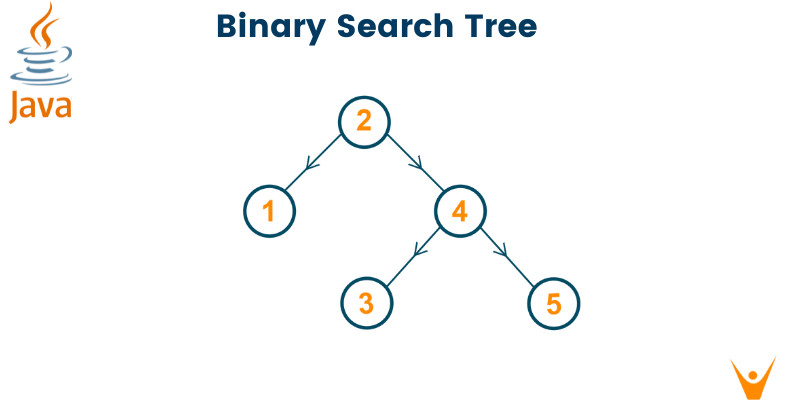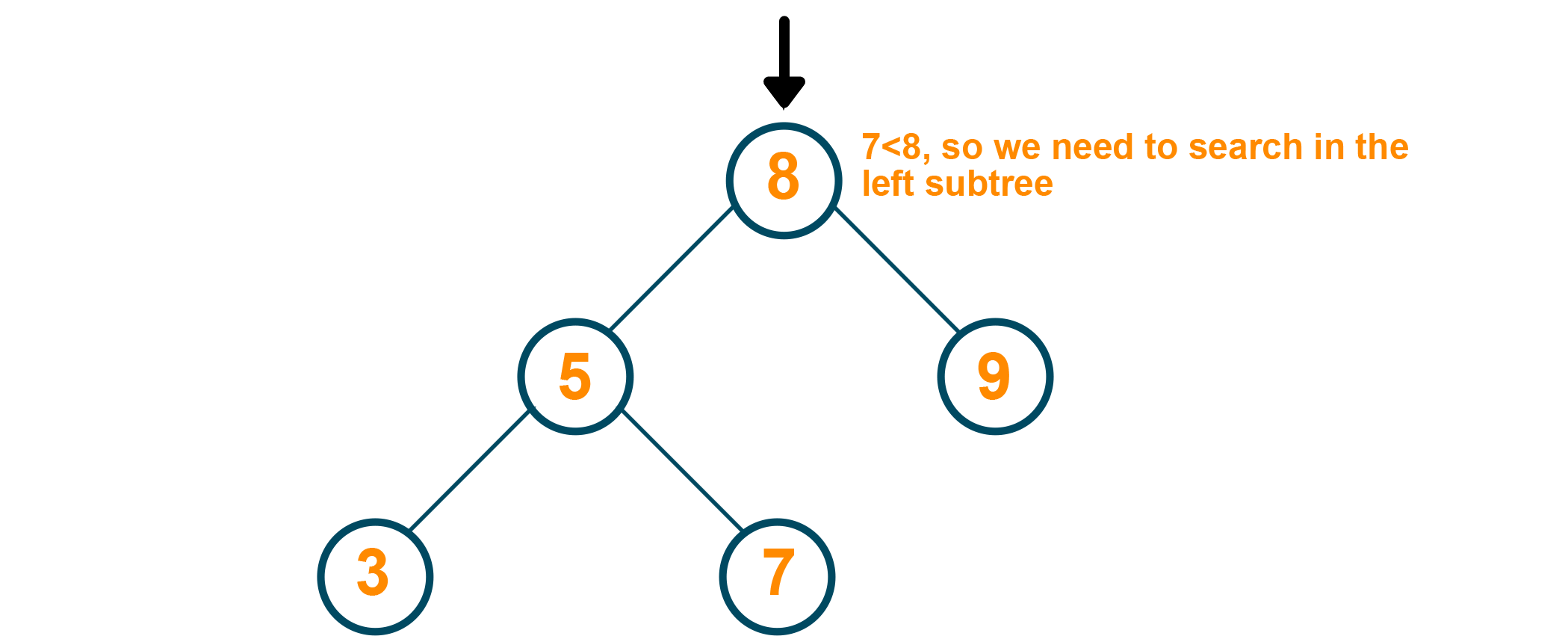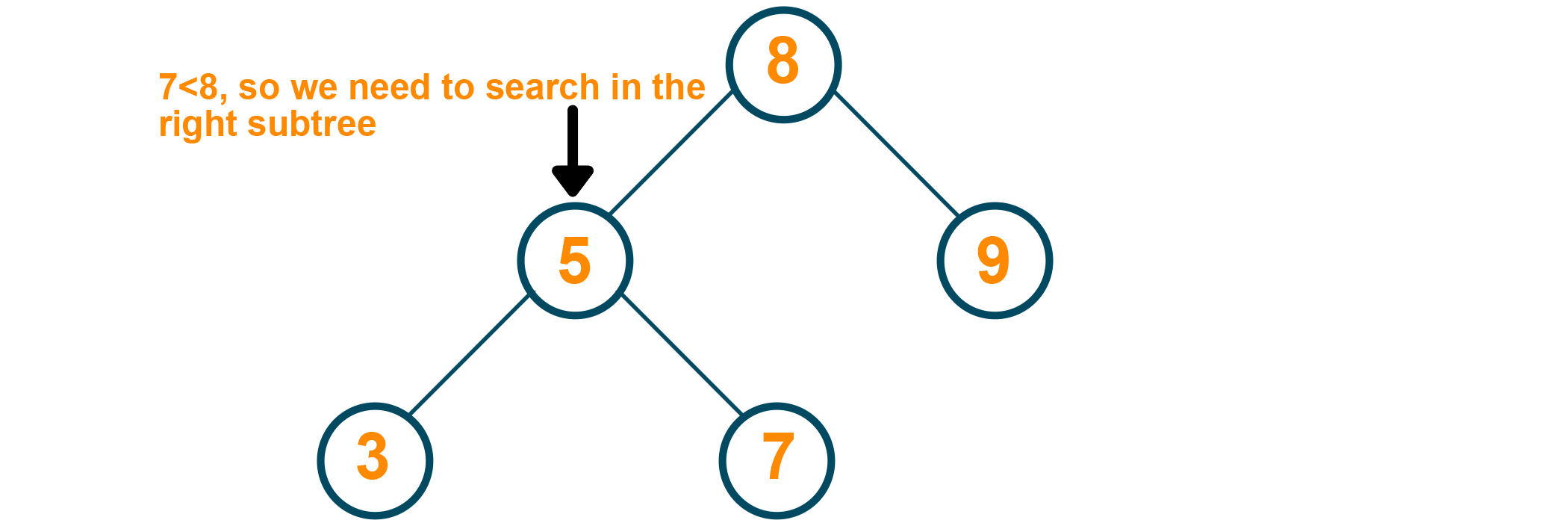
We uphold a strict editorial policy that emphasizes factual accuracy, relevance, and impartiality. Our content is crafted by top technical writers with deep knowledge in the fields of computer science and data science, ensuring each piece is meticulously reviewed by a team of seasoned editors to guarantee compliance with the highest standards in educational content creation and publishing.

Trees might just be one of the most important topics that are asked during technical interviews. In fact, trees have some of the best applications amongst all of the data structures during software development (both while getting hired and when one is working on a technical project!). Trees themselves have many types, though the best known amongst them might probably be the binary tree. What are all of these terms? Well, let's clear them out one by one.
Some general terminology that one needs to understand to be able to follow the discussion on binary trees (and in turn, binary search trees) have been described below:-
Node - Every unit that makes up the tree is called a node. Each node holds some data and points towards other nodes in the tree. For a binary tree, each node has two children - one left child and one right child.
Children - The successors to some node in the tree. With the exception of leaves, all nodes in the binary tree generally have at least one or two children. All children are linked to its parent with a one-way pointer.
Parent - The predecessor to some node in the tree. With the exception of the root, all nodes in the binary tree have a parent.
Root - Like every real-world tree, trees in the digital world take stem from a root. The root is the starting node for a tree from which all of the nodes are added as children. The root does not have a parent since it is the "first node" in the tree.
Leaves - Like a real-world tree, every tree in the digital world has leaves. These leaves are the ultimate nodes in the tree, marking the terminals of the tree. Leaves do not have any children since they technically mark the "borders" for the points where the tree ends.
Intermediate node - All nodes other than the roots and the leaves in a tree are called intermediate nodes. This is so named because these nodes lie in between the root and the leaves of the tree.
Subtree - A subsection of the entire tree.
These terms are crucial for understanding the functionality of the tree as a data structure since they will be repeatedly used in the next few paragraphs.
Well, binary search trees or BST are a special variant of trees that come with a very unique condition for filling in the left and right children of every node in the tree. In order to understand the basics of the binary search tree, one needs to understand the basics of a binary tree first. The binary tree is a tree where each node (except the leaves) has two children. Each node can have one parent and a maximum of two children.
A binary search tree extends upon the concept of a binary tree. A binary search tree is set such that:-
1) Every left node is always lesser than its parent node
2) Every right node is always greater than its parent node
At the time of insertion of nodes, the decision about the position of the node is made. These properties help solve a lot of algorithmic challenges, and as such was designed for that purpose. Binary search trees support all operations that can be performed on binary trees, allowing some of the tasks to be done in lesser time.
public class BinaryTree static class Node //instance variable of Node class public int data; public Node left; public Node right; //constructor public Node(int data) this.data = data; this.left = null; this.right = null; > > // instance variable of binary tree class public Node root; // constructor for initialise the root to null BYDEFAULT public BinaryTree() this.root = null; > // method to check the given tree is Binary search tree or not public boolean isBSTOrNot() return isBSTOrNot(this.root, Integer.MIN_VALUE, Integer.MAX_VALUE); > private boolean isBSTOrNot(Node root, int minValue, int maxValue) // check for root is not null or not if (root == null) return true; > // check for current node value with left node value and right node value and recursively check for left sub tree and right sub tree if(root.data >= minValue && root.data maxValue && isBSTOrNot(root.left, minValue, root.data) && isBSTOrNot(root.right, root.data, maxValue)) return true; > return false; > public static void main(String[] args) // Creating the object of BinaryTree class BinaryTree bt = new BinaryTree(); bt.root= new Node(100); bt.root.left= new Node(90); bt.root.right= new Node(110); bt.root.left.left= new Node(80); bt.root.left.right= new Node(95); System.out.println(bt.isBSTOrNot()); > >
True
All trees can be traversed in three main ways. Each particular approach gives us a different arrangement of nodes. The three main approaches used are:-
1) Preorder - This traversal involves printing the root, then recursively calling the function for the left subtree and the right subtree.
2) Postorder - This traversal involves recursively calling the function for the left subtree and the right subtree and then printing the root.
3) Inorder - This traversal involves recursively calling the function for the left subtree, printing the root, and then recursively calling the function for the right subtree.
All traversals have their own purpose - they are used for getting something done in particular. Preorder traversal helps us copy the contents of the tree which can be used to make a prefix expression. This is especially useful for parsing expression trees - a method used by compilers for segregating symbols and data inside the expression tree. The main use of postorder traversal is to delete a tree in its entirety - from root to the leaves.
Postorder traversal deletes the child nodes before hitting the root, making it ideal for deletion of the tree. Inorder traversal is perhaps one of the most used amongst all the traversal techniques. This is because it is used for printing all the nodes of the tree in ascending order. This can also be modified to print the nodes in descending order. For more details on tree traversals including working codes to put them into action, check out our detailed blog on tree traversal with recursion.
Insertion in a tree should be such that it obeys the main properties of the binary search tree. The basic algorithm should be:-
1) If the node to be inserted is greater than the existing root, move down a level through the right pointer of the root.
2) If the node to be inserted is lesser than the existing root, move down a level through the left pointer of the root.
3) Repeat this process for all nodes till the leaves are reached.
4) Insert the node as the left or right pointer for the leaf (based on its value - if it is smaller than the leaf, it should be inserted as the left pointer; if it is larger than the leaf, it should be inserted as the right pointer)
Let's say that we have to build a binary search tree from scratch. We can take an assortment of elements and try seeing how they are arranged to be in the exact order inside the tree.
2 is the first node to be inserted, so both of its left and right pointers will be null. This is the root of our binary search tree.

4 is the second node to be inserted. Since 4 is greater than 2, 2's right pointer is attached to 4. Both of 4's pointers will be null. In this case, 2 is the root, while 4 is a leaf of the tree.

1 is the third node to be inserted. Since 1 is lesser than 2, 2's left pointer is attached to 1. Both of 1's pointers will be null. Both 2 and 4 are leaves now.

3 is the fourth node to be inserted. Since 3 is greater than 2 but lesser than 4, 3 is inserted as the left child for 4. 4 becomes an intermediate node now, while 3 is a leaf now.

5 is the fifth node to be inserted. Since 5 is greater than both 2 and 4, 5 is inserted as the right child for 4. 5 becomes a leaf in the tree after this step.

In this way, all of the steps are satisfied while constructing the tree. The left subtree always contains elements lesser than the root, while the right subtree always contains elements greater than the root. Now, this concept applies to both the root as well as the intermediate nodes in the trees as well (carefully think about it for a second!).
public class BinarySearchTree public class Node //instance variable of Node class public int data; public Node left; public Node right; //constructor public Node(int data) this.data = data; this.left = null; this.right = null; > > // instance variable public Node root; // constructor for initialise the root to null BYDEFAULT public BinarySearchTree() this.root = null; > // insert method to insert the new Date public void insert(int newData) this.root = insert(root, newData); > public Node insert(Node root, int newData) // Base Case: root is null or not if (root == null) // Insert the new data, if root is null. root = new Node(newData); // return the current root to his sub tree return root; > // Here checking for root data is greater or equal to newData or not else if (root.data >= newData) // if current root data is greater than the new data then now process the left sub-tree root.left = insert(root.left, newData); > else // if current root data is less than the new data then now process the right sub-tree root.right = insert(root.right, newData); > return root; > //Traversal public void preorder() preorder(root); > public void preorder(Node root) if (root == null) return; > System.out.print(root.data + " "); preorder(root.left); preorder(root.right); > public static void main(String[] args) // Creating the object of BinarySearchTree class BinarySearchTree bst = new BinarySearchTree(); // call the method insert bst.insert(2); bst.insert(4); bst.insert(1); bst.insert(3); bst.insert(5); bst.preorder(); > >
2 1 4 3 5
Deletion is a bit more complicated than insertion because it varies depending on the node that needs to be deleted from the tree.
1) If the node has no children (that is, it is a leaf) - it can simply be deleted from the tree.
Here's an example of a tree-

9 is to be deleted from the tree. It can simply be dropped from the tree, and its predecessor's (in this case, the root) pointers need to be made null.

2) If the node has one child, simply delete the node and move the child up to replace it.
Here's an example of a tree-

9 is to be deleted from the tree. Here, the successor of 9 (which is 11) is directly attached to 9's predecessor (which is the root)

3) If the node has two children, it becomes a little tricky. We need to find the node which has the smallest value in the right subtree (among the elements that have a greater value than the node to be deleted) for the node and use that to replace the deleted node. (Note that the smallest value in the right subtree is the node that comes immediately after the node to be deleted, implying that it is the inorder successor for the node to be deleted).
Here's an example of a tree-

5 is to be deleted from the tree. In this case, the inorder successor of 5 (or the greatest element in the left subtree, which is 3) is to be attached to 5's predecessor (which is the root).

public class BinarySearchTree public static class Node //instance variable of Node class public int data; public Node left; public Node right; //constructor public Node(int data) this.data = data; this.left = null; this.right = null; > > // instance variable public Node root; // constructor for initialise the root to null BYDEFAULT public BinarySearchTree() this.root = null; > // insert method to insert the new Date public void insert(int newData) this.root = insert(root, newData); > public Node insert(Node root, int newData) // Base Case: root is null or not if (root == null) // Insert the new data, if root is null. root = new Node(newData); // return the current root to his sub tree return root; > // Here checking for root data is greater or equal to newData or not else if (root.data >= newData) // if current root data is greater than the new data then now process the left sub-tree root.left = insert(root.left, newData); > else // if current root data is less than the new data then now process the right sub-tree root.right = insert(root.right, newData); > return root; > /* * Case 1:- No child * Case 2:- 1 child * case 3:- 2 child * */ public void deleteANode(Node node) deleteNode(this.root, node); > private Node deleteNode(Node root, Node node) // check for node initially if (root == null) return null; > else if (node.data root.data) // process the left sub tree root.left = deleteNode(root.left, node); > else if (node.data > root.data) // process the right sub tree root.right = deleteNode(root.right, node); > else if(root.data==node.data) // case 3: 2 child if (root.left != null && root.right != null) int lmax = findMaxData(root.left); root.data = lmax; root.left = deleteNode(root.left, new Node(lmax)); return root; > //case 2: one child // case i-> has only left child else if (root.left != null) return root.left; > // case ii-> has only right child else if (root.right != null) return root.right; > //case 1:- no child else return null; > > return root; > // inorder successor of given node public int findMaxData(Node root) if (root.right != null) return findMaxData(root.right); > else return root.data; > > public void preorder() preorder(root); System.out.println(); > public void preorder(Node node) if(node!=null) System.out.print(node.data+" "); preorder(node.left); preorder(node.right); > > public static void main(String[] args) // Creating the object of BinarySearchTree class BinarySearchTree bst = new BinarySearchTree(); // call the method insert bst.insert(8); bst.insert(5); bst.insert(9); bst.insert(3); bst.insert(7);
bst.preorder(); bst.deleteANode(new Node(9)); bst.preorder(); > >
8 5 3 7 9
8 5 3 7
Because of the unique properties of a binary search tree, the algorithm used for searching in a binary search tree is much less complex and requires lesser time to execute. To search for an element, simply follow the below steps:-
1) If the given element is equal to the root, return the index of the root.
2) If the root is greater than the given element, move to the right subtree.
3) If the root is lesser than the given element, move to the left subtree.
4) Repeat till the element is found or till the leaves are reached. If the leaves are reached and the element still isn't found - it doesn't exist in the tree.
In the below example we are searching for element 7

Since the root (which is 8 ) is greater than the element to be searched for, we need to search in the left subtree.

Since node 5 is of a lesser value than the element to be searched for, we need to search in the right subtree.